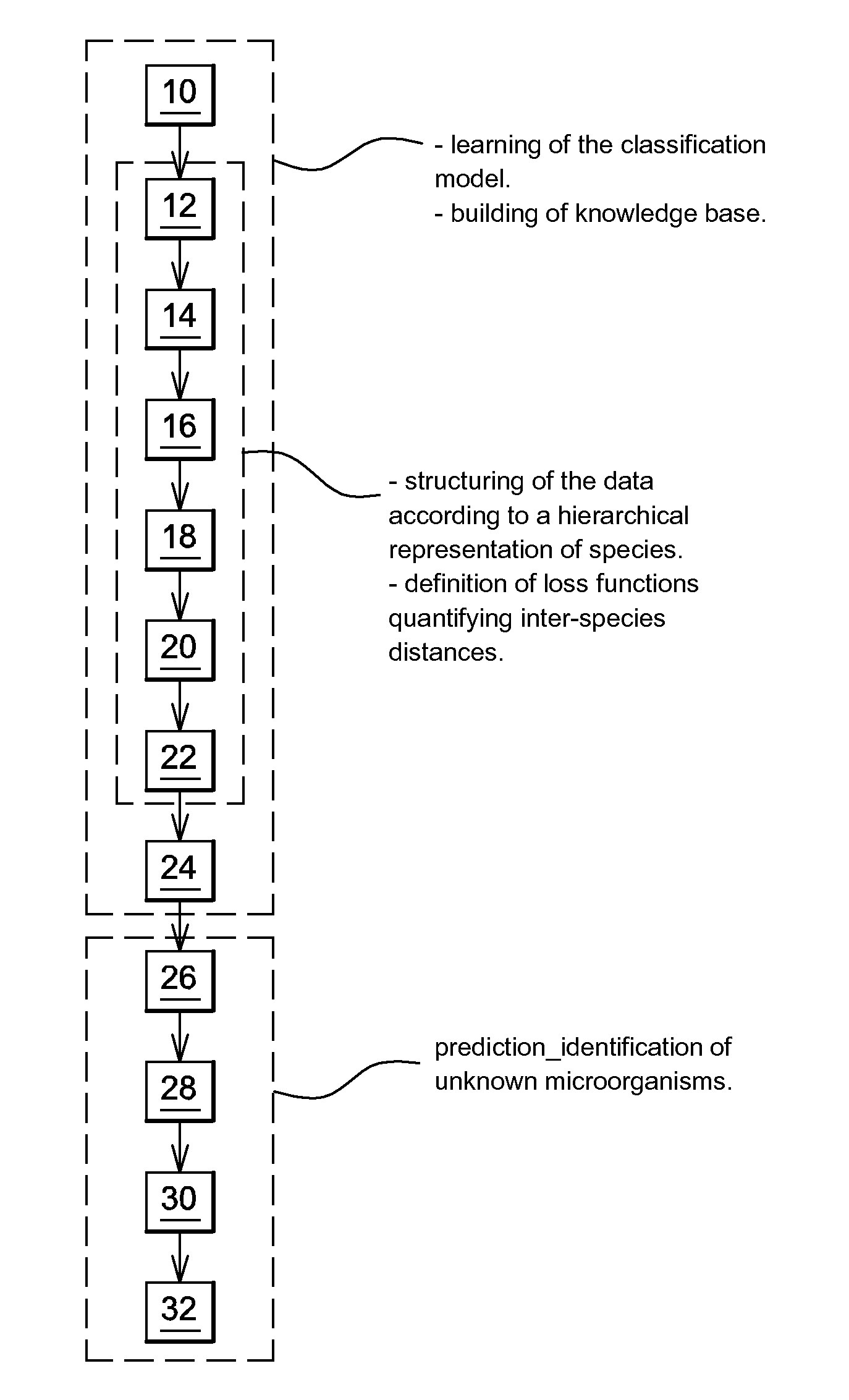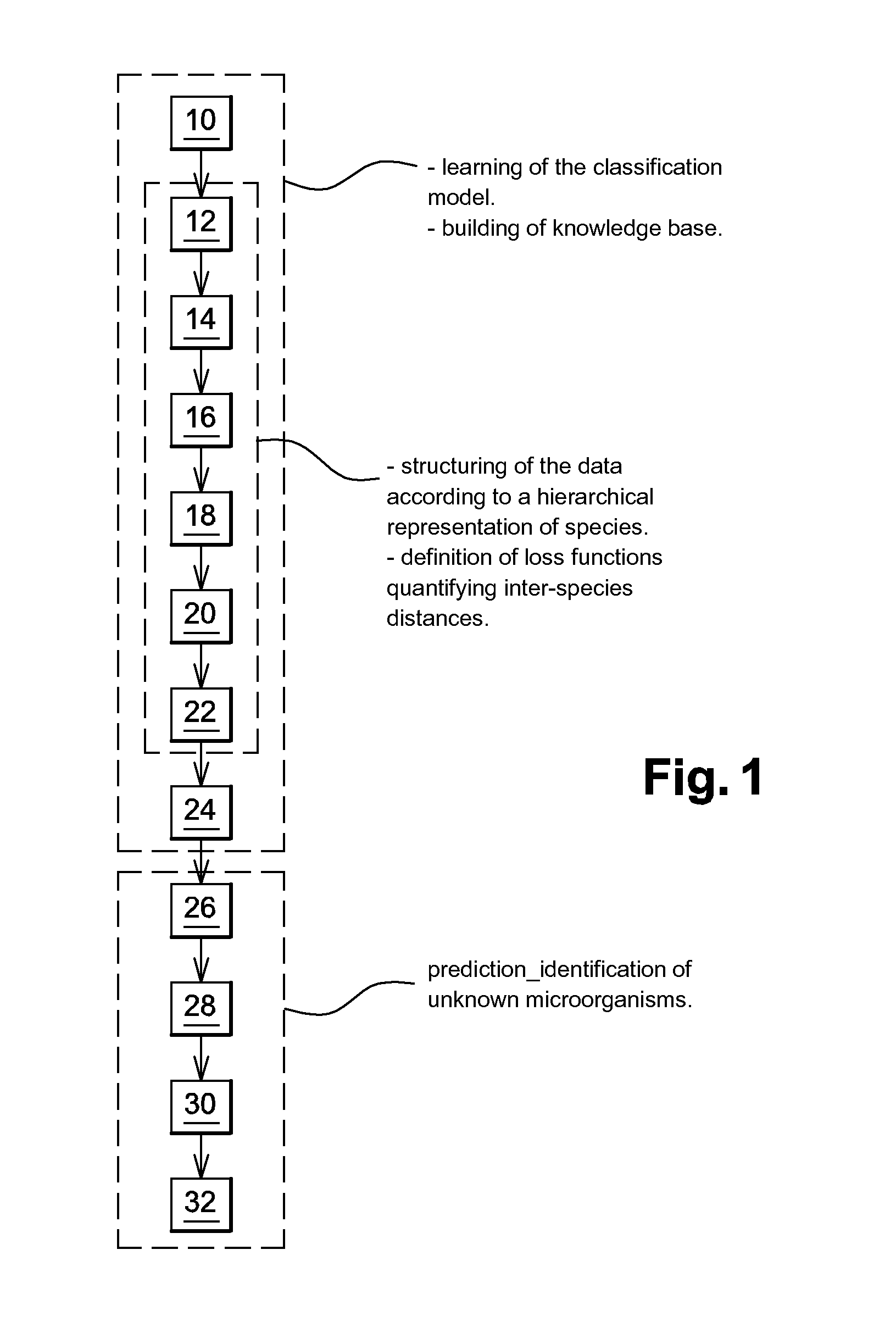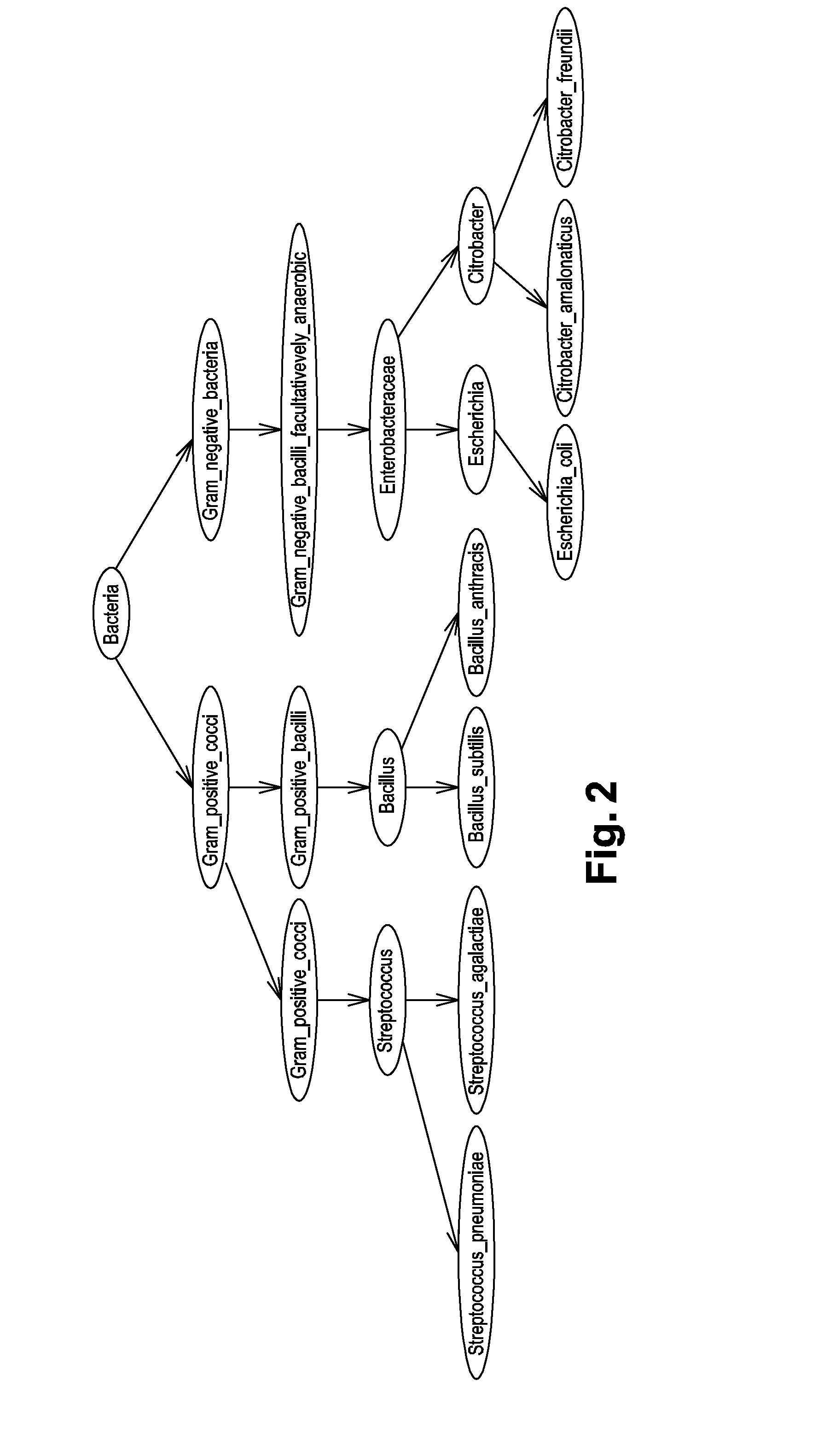Identification Of Microorganisms By Spectrometry And Structured Classification
- Summary
- Abstract
- Description
- Claims
- Application Information
AI Technical Summary
Benefits of technology
Problems solved by technology
Method used
Image
Examples
Embodiment Construction
[0091]A method according to the invention applied to MALDI-TOF spectrometry will now be described in relation with the flowchart of FIG. 1.
[0092]The method starts with a step 10 of acquiring a set of training mass spectra of a new microorganism species to be integrated in a knowledge base, for example, by means of a MALDI-TOF (“Matrix-assisted laser desorption / ionization time of flight”) mass spectrometry. MALDI-TOF mass spectrometry is well known per se and will not be described in further detail hereafter. Reference may for example be made to Jackson O. Lay's document, “Maldi-tof spectrometry of bacteria”, Mass Spectrometry Reviews, 2001, 20, 172-194. The acquired spectra are then preprocessed, particularly to denoise them and remove their baseline, as known per se.
[0093]The peaks present in the acquired spectrum are then identified at step 12, for example, by means of a peak detection algorithm based on the detection of local maximum values. A list of peaks for each acquired spec...
PUM
 Login to View More
Login to View More Abstract
Description
Claims
Application Information
 Login to View More
Login to View More - R&D
- Intellectual Property
- Life Sciences
- Materials
- Tech Scout
- Unparalleled Data Quality
- Higher Quality Content
- 60% Fewer Hallucinations
Browse by: Latest US Patents, China's latest patents, Technical Efficacy Thesaurus, Application Domain, Technology Topic, Popular Technical Reports.
© 2025 PatSnap. All rights reserved.Legal|Privacy policy|Modern Slavery Act Transparency Statement|Sitemap|About US| Contact US: help@patsnap.com



